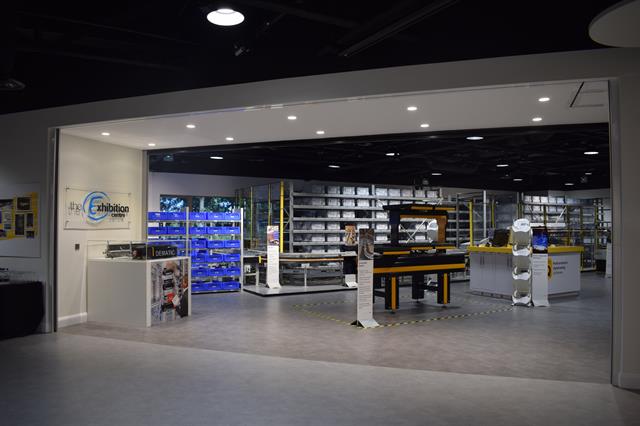 Dematic showcases its solutions at a Customer Day |
Dematic this year marks its 200th anniversary, reflecting on significant changes since Friedrich Wilhelm Harkort launched the predecessor of the intralogistics automation specialist with the Mechanische Werkstätten Harkort & Co. in Wetter an der Ruhr in 1819.
"Dematic looks back over a long tradition. Our innovative strength has decisively shaped the history of intralogistics. We continue to make that claim today," says Rainer Buchmann, CEO of Dematic Central Europe.
After the first mechanical loom in 1784 ushered in the first phase of the Industrial Revolution, the Mechanische Werkstätten Harkort & Co. early on relied on water and steam-powered production plants. As early as 1819, the company developed the first steam-powered crane and produced indoor cranes in a series starting in 1840.
With the introduction of electricity as a source of power in 1870, the second phase of the Industrial Revolution began. The internal combustion engine replaced the steam engine, and the chemical and electrical engineering industries developed into new leading sectors. Consequently, another forerunner company was founded in 1900 with the Stöhr Elevatorenfabrik, which specialised in continuous conveyors, elevators and bucket conveyors.
In 1922, the company built its first mobile conveyor belt. A few years later, Stöhr developed the first suspended conveyor technology. This was an advance that enabled far more effective use of space in factories. At the end of the 1950s, Stöhr created a paradigm shift in intralogistics with the world's first storage and retrieval system. Three years later, the company built the first fully automated warehouse for Bertelsmann, processing up to 15,000 orders a day.
The third Industrial Revolution began in 1970 when the first programmable logic controller (PLC), named Modicon 084, was launched. For the first time, machines and systems were digitally controlled and operated with this device. To date, PLCs have been widely used in automation technology. Three years later, Mannesmann AG, which in the meantime had taken over Stöhr, revolutionised the construction of distribution centres with the world's first automated high-bay warehouse. In 1990, the company finally rose to become the global market leader in conveyor technology. Five years later, Mannesmann Demag was the world's first complete supplier of intralogistics.
At the turn of the millennium, the fourth phase of the Industrial Revolution began with a primary focus on cyber-physical systems. These ensure decentralised dynamic control and the networking of all components via the Internet, mobile computers and cloud computing. After 2005, when Dematic GmbH & Co. KG was established as an independent enterprise, the intralogistics automation company revamped the market for automated small parts storage at that time and invented the Dematic Multishuttle. In 2011, the company once again demonstrated its innovative strength and presented the RapidStore storage and retrieval unit, the RapidPick order picking station, the Multishuttle Flex and the DC Director warehouse management software. The second generation of the Dematic Multishuttle, introduced in 2012, was lighter, faster and even more powerful.
"The greatest success of our company ... is the fact that we have always succeeded in influencing the market in an innovative way and in retaining both qualified and committed employees. Without them, we could not celebrate our 200th anniversary this year," says Buchmann.
Dematic, now part of the KION Group, employs over 6,000 skilled logistics professionals to serve its customers globally, with engineering centres and manufacturing facilities located around the world.